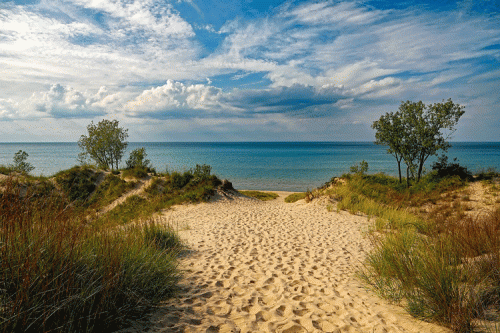ESI Program Holds Briefing for Great Lakes Restoration Initiative
APRIL 15, 2022 — The Environmental Sensitivity Index program gave a briefing on Friday, April 15, 2022 for federal and state-level stakeholders in the Great Lakes region. Organized by the Great Lakes Restoration Initiative, the briefing was an opportunity to create awareness among our partners regarding the ESI product, recent updates to ESI data, and changes to the ESI program, as some of them have not worked with the ESI products before. There were more than 20 attendees at this briefing, and the ESI team is excited to continue sharing these updates and working with GLRI to advance conservation and response goals in the Great Lakes region.
The GLRI is an initiative within the Environmental Protection Agency to protect and restore the Great Lakes’ unique ecosystem and address environmental threats. GLRI has directed funding to OR&R to support updates to ESI maps and data for Lake Ontario, which will start in the fall of 2022. GLRI previously supported an update to the ESI datasets for the Straits of Mackinac and the St. Clair/Detroit River System in 2019.
ESI maps provide a concise summary of coastal resources that are at risk if an oil or chemical spill occurs nearby. Examples of at-risk resources include biological resources (such as birds and shellfish beds), sensitive shorelines (such as marshes and tidal flats), and human-use resources (such as public beaches and parks). When a spill occurs, ESI maps can help responders reduce the environmental consequences of the spill and the cleanup efforts. Additionally, ESI maps can be used by planners before a spill happens to identify vulnerable locations, establish protection priorities, and identify cleanup strategies.
Originally developed as a tool for oil and chemical spill responders, ESIs are now used across the public and private sectors to assist in activities ranging from natural resource damage assessment, restoration planning, environmental permitting and compliance, vessel traffic routing, port development, marine debris removal, hurricane response, and selection of marine sanctuary sites and conservation site targets, among many others, including their original use as spill planning and response tools.
For more information, please contact ESI Program Manager Nicolle.R.Rutherford@noaa.gov.
 An official website of the United States government.
An official website of the United States government.

